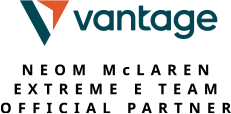Vantage uses cookies that are essential for our website to work. We also use optional analytical cookies to help us to improve our website and the services, content and ads we provide to you which you can accept or reject here. Please see our Cookies Policy for more information on how we use cookies.
CFDs and Spread Bets are complex instruments and come with a high risk of losing money rapidly due to leverage. 73.5% of retail investor accounts lose money when trading CFDs and Spread Bets with this provider. You should consider whether you understand how CFDs and Spread Bets work and whether you can afford to take the high risk of losing your money. Please seek independent advice if necessary.
Beginners Guide to Trading Forex
Forex is the abbreviated version of foreign exchange. In simpler words, it is the rate at which you can exchange one currency for another. If you’ve ever travelled overseas, you might have needed to change your domestic currency for US dollars or the currency of the country you travelled to. You would have noticed that the two currencies in question were not equal, meaning that you might have needed to pay a greater amount of your domestic currency to buy US dollars or vice versa.
If you have done so, you have already been a part of the forex market, without even realising it! You might also already know that the value of every currency keeps on changing throughout the day. Forex traders take advantage of these small price changes to earn a profit. Today, 170 currencies are traded in the forex market. It is the largest and most liquid financial market, worth $2.4 quadrillion as of 2022 and with an average daily traded volume of $6.6 trillion.

The Forex Market
The forex market is a global market that allows you to exchange one currency for another. It is a decentralised market, meaning that there is no central exchange on which trading is done. Unlike other markets, it functions 24 hours a day, 5 days a week. This is because of the time zone difference across countries. There are 4 major trading sessions, the Sydney, Tokyo, London and New York sessions. Trading starts each week with the opening of the Sydney session at 9:00 pm UTC on Sunday and ends with the closing of the New York session at 10:00 pm UTC on Friday .
NYSE is the largest stock market in the world that trades a volume of $22.4 billion each day. But this is just a fraction of the volume traded in the forex market because stock markets are limited to a particular country while forex is a global market.
Forex is usually traded in 3 ways: spot, forwards and futures.
Spot Market
Forex rates fluctuate constantly. Traders attempt to capitalise on these small changes by buying and selling currencies on the spot market or at the current price. This trade is termed a spot deal. The price is dependent on several factors like supply and demand, economic factors like the nation’s interest rates, political factors like elections, and others.
Forwards and Futures Market
A private contract between two parties is called a forward contract. One party agrees to buy the currency from the other at a decided date in the future. The price to be paid is determined at the time of opening the contract, and any fluctuations in the currency price do not affect the pre-determined trade price. A forward contract is traded over-the-counter (OTC). OTC trading is done directly between the two parties without any third-party mediator.
A futures contract, on the other hand,is a derivatives contract between two parties, where the buyer and seller agree to a specific price and time of the contract. Such contracts require a third-party intermediary, such as an exchange. Contracts for Difference (CFDs) are a type of futures contract.
Key Terms You Should Know
Learning the terminology of the forex market can ease the trading experience for beginners. As mentioned earlier, this is the only market where one asset (currency) is exchanged for another. So, trading always occurs in pairs.
Currency pairs can further be classified into three subcategories: Major, minor and exotic.
1. Major Currency Pairs
The most popularly traded currency pairs are classified as major pairs. These pairs usually include the US dollar. They are:
- EUR/USD: Euro/US Dollar
- USD/JPY: Euro/Japanese Yen
- GBP/USD: Great British Pound/US Dollar
- USD/CHF: US Dollar/Swiss Franc
- USD/CAD: US Dollar/Canadian Dollar
- AUD/USD: Australian Dollar/US Dollar
- NZD/USD: New Zealand Dollar/US Dollar
2. Minor Currency Pairs
Pairs that do not include the USD are called minor pairs or cross-currency pairs. The most widely traded ones are:
- EUR/GBP: Euro/Great British Pound
- EUR/JPY: Euro/Japanese Yen
- GBP/JPY: Great British Pound/Japanese Yen
- GBP/CAD: Great British Pound/Canadian Dollar
- CHF/JPY: Swiss Franc/Japanese Yen
- EUR/AUD: Euro/Australian Dollar
- NZD/JPY: New Zealand Dollar/Japanese Yen
3. Exotic Currency Pairs
Currency pairs that include emerging market currencies are known as exotic pairs. These are not traded as often as major and minor pairs. Some of the most popular exotic pairs are:
- EUR/TRY: Euro/Turkish Lira
- USD/HKD: US Dollar/Hong Kong Dollar
- JPY/NOK: Japanese Yen/Norwegian Krone
- NZD/SGD: New Zealand Dollar/Singapore Dollar
- GBP/ZAR: Great British Pound/South African Rand
- AUD/MXN: Australian Dollar/Mexican Peso
Forex Quotes
Beginners need to know how to read price quotes while trading forex. Here’s what you should know about price quotes:
- Base Currency and Counter/Quote Currency: The first currency mentioned in a forex pair is called the base currency while the second currency is the quote currency. The forex rate is mentioned in terms of the base currency, which tells you how many units of the base currency you will need to buy one unit of the quote currency. For instance, if the EUR/USD price is quoted as 1.0163, it means that you will need €1.0163 to buy $1.
- Bid and Ask Price: Bid price is the highest price at which a buyer is willing to buy a currency, while the ask price is the lowest price at which the seller wishes to sell a currency.
- Spreads: This is the difference between the bid and ask price. The bid price tends to be higher than the ask price. This difference is how your broker earns money.
- Pip: Percentage in point or pip is the smallest change that can occur in the forex rate. Let’s take the GBP/USD for example. If the price is 1.2120, the smallest price move upwards can be to 1.2021. This is a rise of 0.0001 or 1 pip. Pips are usually calculated till the fourth decimal place, except for the Japanese yen, where the pip is calculated only till the second decimal place.
How Does Forex Trading Work?
Forex, like any other market, works on supply and demand. When a trader predicts that a currency price is going to rise, they buy the currency, and when they think the price will decline, they sell it. The main difference between forex trading and other markets is that here, trading is always done in pairs. While you buy one currency, you sell another. If the currency you’ve bought rises, you earn a profit, and if it declines, you suffer a loss.
For example, the price of GBP/USD 1.2100. If you buy $1,000 for £1,210 and later the rate moves to 1.3100, you could sell the $1,000 for £1,310 and earn a profit of £100. At the same time, if the price goes from 1.2100 to 1.1100 and you sell your USD holdings, you suffer a loss of £100.
Forex Trading Strategies
Forex trades are mainly of two types: long and short. A long trade is when you buy one currency in exchange for another in hopes that the price of the former currency will increase in the future. A short trade is when you sell a currency because you expect the price to decline.
Now, based on the duration for which you hold positions open, trading strategies are classified into four types: Scalping, Day Trading, Swing Trading and Position Trading.
1. Scalping
This is when you hold a position for only a few minutes or even seconds. It is done with the motive of earning small profits from the constant forex rate fluctuations. This means you enter and exit multiple trades throughout the day to accumulate gains.
2. Day Trading
Day Trades are when you open and close your position within the same day. Again, the duration of such trades could be from a few minutes to a few hours. These trades also attempt to capture small price fluctuations.
3. Swing Trading
This is whena trader holds their position for a few days to a few weeks. Swing trades mostly take place during government announcements or other economic activities, such as central banks’ interest rate hikes. Swing traders attempt to capture the peaks and dips in currency value, driven by such events.
4. Position Trading
Here, the trader holds their position for a few months to a few years, making this a long-term strategy. Traders tend to ignore short-term forex moves to focus on long-term trends.
Advantages of Forex Trading
- It is the largest financial market in terms of daily traded volumes, which also makes it the market with the highest liquidity. This means you are likely to find a counterparty to your trade whenever you wish to open or close a position.
- Barriers to entry are low, with some brokers requiring a minimum initial deposit of just $50.
- Trading can be done 24 hours a day, 5 days a week, unlike other markets, which function only during specific times of the day, 5 days a week.
- Leverage is widely used in forex markets, which means that you can increase your exposure to the market with only a small investment from your end. Though keep in mind that leverage magnifies losses as well as wins!
- It is a decentralised market, so the potential for manipulation is comparatively low.
- Information regarding market moves is easily available, as are charting and technical analysis tools.
- There are hundreds of currency pairs to choose from, allowing you to diversify while accessing multiple trading opportunities.
Risks While Trading Forex
- Currency prices fluctuate constantly, which means the market tends to be volatile.
- The availability of high leverage ratios can both magnify your profit potential and your potential losses.
- It is an international market, which means that an important event in one country could lead to changes in currency prices of other countries as well. So, keeping an eye on the news is crucial.
Managing Risks in Forex Trading
With risks come some effective risk management strategies. Here are a few of them to help you minimise risk in forex trading.
- Never trade with all your money. Experienced traders recommend the 1% or 2% rule, which means using only 1% or 2% of your total capital on a single trade.
- Consider starting with a demo account to familiarise yourself with the market and the trading tools. You can go back to the demo account to test and fine-tune trading strategies.
- Understand the liquidity of the currency you are trading.
- Use leverage wisely.
- Always use stop loss and take profit orders to automatically close positions when the market moves in an unfavourable direction.
- Be disciplined and patient. Stick to your strategy, rather than giving in to temptation or emotions like fear or greed.
- Base your trading decisions on strong fundamental and technical analysis to prevent emotions from taking over.
- Never keep all your eggs in one basket. Diversify your portfolio across currency pairs and asset classes.
- Monitor your trades or use EAs.
Conclusion
To start with trading forex, beginners need to know the basics of the markets and the currencies they prefer. It is also important to choose your broker and trading platform carefully. MetaTrader 4 (MT4) is one of the most popular platforms for beginners. Also, check whether your broker provides the tightest spreads possible and ultra-fast trade execution. Lastly, it may be best to start small, and gradually increase your position size as you gain familiarity and confidence in the market.
Power your trading with Vantage Markets.
Open a RAW ECN account and start trading with spreads from 0.0 pips.
Disclaimer
Vantage does not represent or warrant that the material provided here is accurate, current, or complete, and therefore should not be relied upon as such. The information provided here, whether from a third party or not, is not to be considered as a recommendation; or an offer to buy or sell; or the solicitation of an offer to buy or sell any financial instruments; or to participate in any specific trading strategy. Any research provided does not have regard to the specific investment objectives, financial situation and needs of any specific person who may receive it. We advise any readers of this content to seek their own advice. Past performance is not an indication of future results whereas reference to examples and/or charts is solely made for illustration and/or educational purposes. Without the approval of Vantage, reproduction or redistribution of this information is not permitted.
Latest Releases
-
How to Buy Bonds in the UK
Bonds are a popular debt instrument that can offer capital gains, steady income or potential to profit from speculation. Here’s …
-
Forex Broker UK – All You Need to Know
Forex brokers offer retail investors in the U.K. speed, convenience and cost savings for global forex trades. Here’s what you …
-
Top 5 UK Stocks to Buy in 2023
From aviation to banking and property development, we picked five best U.K. stocks listed on the London Stock Exchange to …
-
May 15,2024
The Role of AI and Machine Learning in Forex Trading
Explore how AI and machine learning are revolutionising forex trading, enhancing decision-making and increasing market efficiency.
-
May 15,2024
Mastering Forex Risk Management
Learn how to manage forex risk effectively to protect capital and optimise returns, despite market volatility and global economic events.
-
Apr 08,2024
AI and Reactivity – How AI Can Enhance Trading News Reaction Times
Explore how AI transforms trading news response times, ensures swift reactions, and mitigates risks in the fast-paced financial markets.









